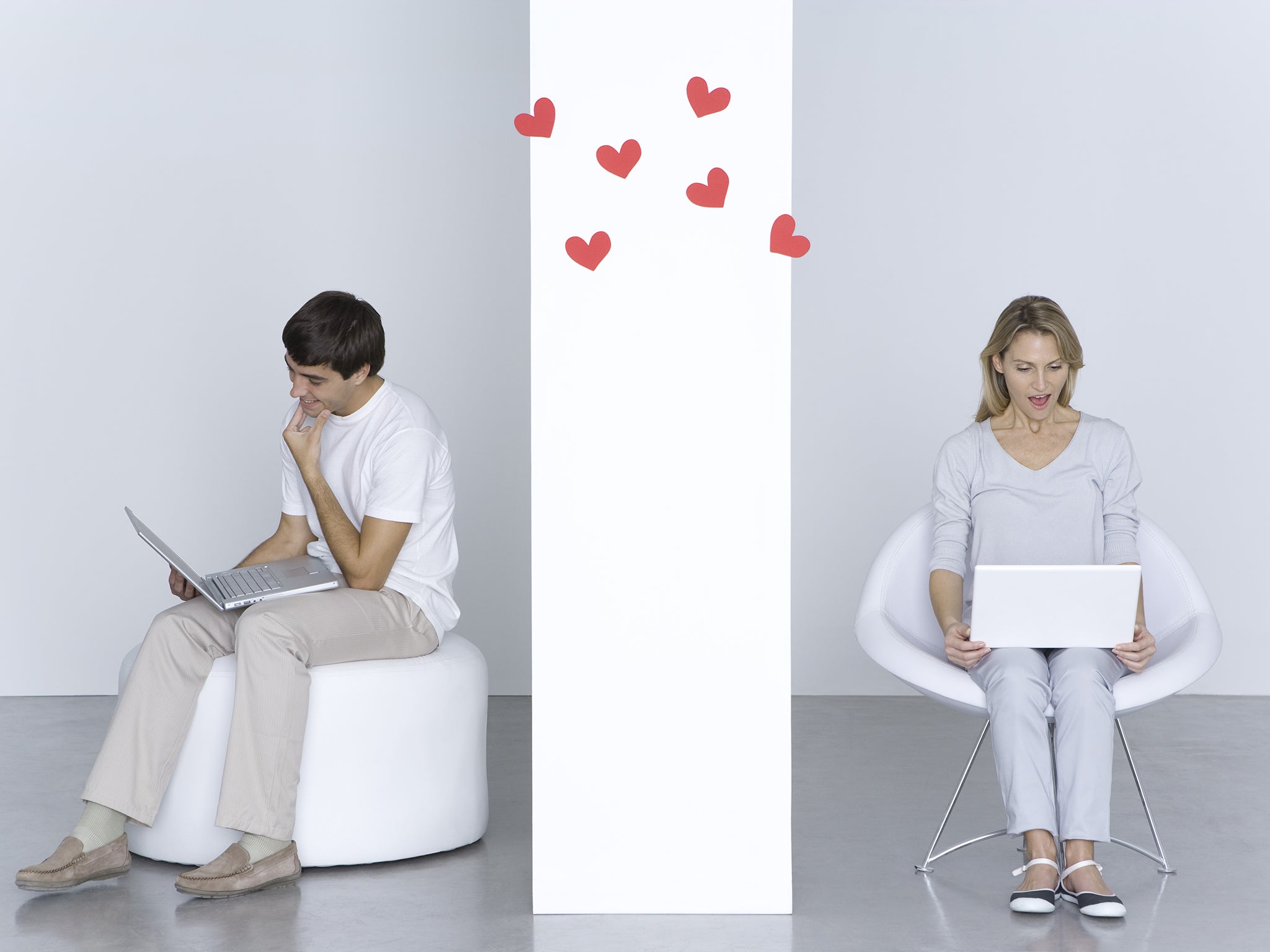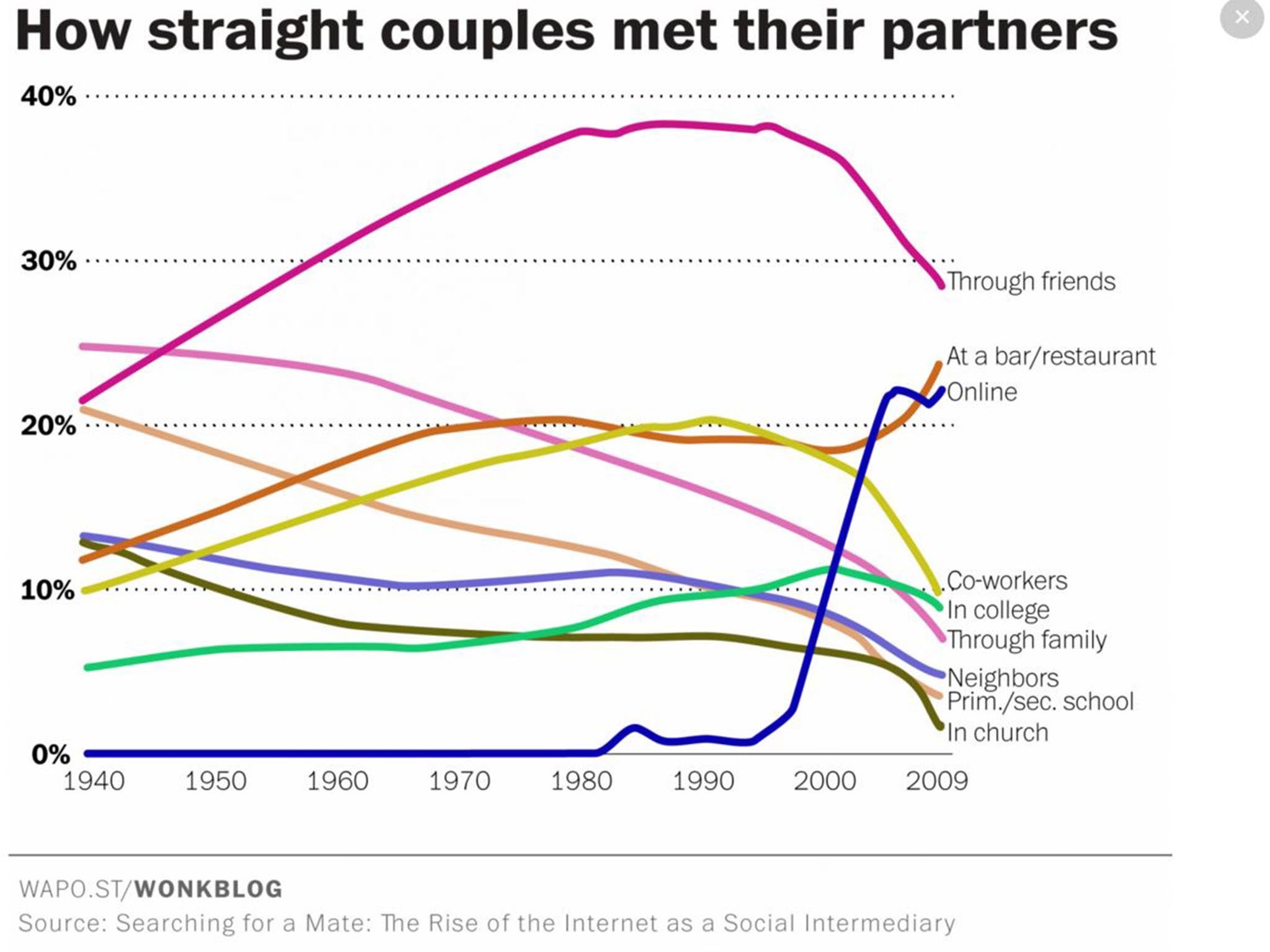Relationships: There are only three ways to meet anyone anymore
'As a more efficient market, the Internet tends to displace other markets for partners'

Your support helps us to tell the story
From reproductive rights to climate change to Big Tech, The Independent is on the ground when the story is developing. Whether it's investigating the financials of Elon Musk's pro-Trump PAC or producing our latest documentary, 'The A Word', which shines a light on the American women fighting for reproductive rights, we know how important it is to parse out the facts from the messaging.
At such a critical moment in US history, we need reporters on the ground. Your donation allows us to keep sending journalists to speak to both sides of the story.
The Independent is trusted by Americans across the entire political spectrum. And unlike many other quality news outlets, we choose not to lock Americans out of our reporting and analysis with paywalls. We believe quality journalism should be available to everyone, paid for by those who can afford it.
Your support makes all the difference.Last month, the BBC explained how love has changed over the years. “It was easier in the olden days. Future spouses could be found living around the corner. Or at least in your part of town,” the piece said, directing attention to a series of charts. There was one about how close to one another people who ended up together used to live (the answer is very close). Another about how the average age at which people get married has evolved (it has, as you probably know, been creeping upwards for some time).
And there was this, an eye-catching display of dating data, and arguably the most interesting of the lot:

The chart, which comes from a longitudinal study by sociologist Michael Rosenfeld, says a lot about how romance has evolved over the past 60 some odd years. It shows the rise of online dating (which has only been more pronounced for same-sex couples), clearly depicted by the darker of the two blue lines above (notice not only its furious ascent, but also its relative importance—more than 20 percent of straight couples reported meeting their partners online in 2009, the most recent year for which data are available). It underscores the outsized role of friends, who historically have been and still are the likeliest avenue to eventual significant others.
But Rosenfeld's data also says a lot about how much life has changed over the same period.
It speaks to the weakening of America's religious backbone, which has lost influence with each passing generation. A recent survey by the Pew Research Center chronicles this decline, showing that more than half of Americans born in the 1930s and 1940s attend religious services at least once a week, while only about a quarter of those born in the 1980s and 1990s (the ones we adoringly call millennials) visit religious institutions that often. Couple that with online dating, where the still large but shrinking religious demographic can filter out those less God fearing, and it's no wonder the church has become such an irrelevant matchmaker.
It reflects the urbanisation of society, which has inflated the role of bars and restaurants in courtship (see that red line?). In 1940, only about 57 percent of the population lived in cities, according to U.S. Census data. Over time, however, that number has only shot up, reaching 81 percent in 2010. More people living in smaller geographic areas means we're all brushing up against strangers more often—and what better place for that to happen than at an establishment that serves booze?
The same shift to densely populated urban areas has left many of the institutions that once defined, or at least (wink wink) heavily influenced, our romantic decisions behind.
The most notable is the collapse of family in this regard, which once played the largest role in societal matchmaking—“connecting young people with potential opposite-sex, same-race, and same-religion partners has always been one of the core functions of the family,” Rosenfeld wrote in a 2012 paper. The declining influence comes in large part thanks to the diminishing need for one's parents (or their friends) to play cupid, but also speaks to the blurring of once rigid class borders. But work, school, community, all of which used to be fertile breeding grounds, have lost their relevancy too.
Now that our lives are no longer sparse, we don't lean quite so heavily on the mini communities we have historically looked to for companionship.
Of course, the data also show the influence of other things. The drop in primary and secondary school matchmaking is indicative of the rising age of marriage. And there's the Internet—most of the above trends can be attributed, at least partly, to its rise.
“As a more efficient market, the Internet tends to displace other markets for partners,” Rosenfeld explained.
At the very least, as I learned on a recent night, it's a pretty decent fall back:
Copyright: Washington Post
Join our commenting forum
Join thought-provoking conversations, follow other Independent readers and see their replies
Comments